How to fix the menu display on Panasonic SC-PT953 Home Theater System?
- MMelissa BallSep 23, 2025
If the menu is not displayed correctly on your Panasonic Home Theater System, restore the zoom ratio to “a1.00”. (“Manual Zoom” in Display Menu)
How to fix the menu display on Panasonic SC-PT953 Home Theater System?
If the menu is not displayed correctly on your Panasonic Home Theater System, restore the zoom ratio to “a1.00”. (“Manual Zoom” in Display Menu)
What to do if my Panasonic SC-PT953 shows “F61”?
If the Panasonic Home Theater System displays “F61”, check and correct the speaker cable connections. If the problem persists, it is recommended to consult the dealer.
How to fix “DVD U11” error on Panasonic Home Theater System?
If your Panasonic Home Theater System displays “DVD U11”, the disc may be dirty. Try wiping it clean.
What does “ERROR” mean on my Panasonic SC-PT953 Home Theater System?
If your Panasonic Home Theater System displays “ERROR”, it indicates an incorrect operation. Consult the instructions and try again. Ensure preparations have been made before Auto Speaker Setup. Check and correct the speaker cable connections if you are doing Auto Speaker Setup. Also, cancel muting before Auto Speaker Setup, as the volume might be muted.
Why does my Panasonic SC-PT953 Home Theater System say “NO DISC”?
If the Panasonic Home Theater System displays “NO DISC”, it means that you either have not inserted a disc, or you have not inserted it correctly. Insert a disc correctly.
Why are the buttons on my Panasonic SC-PT953 Home Theater System not responding?
If the Panasonic Home Theater System is not responding when any buttons are pressed, turn the unit off and then back on. Alternatively, turn the unit off, disconnect the AC power supply cord, and then reconnect it. Wait 1 to 2 hours for condensation to evaporate.
Why is “NO SIGNL” flashing on my Panasonic SC-PT953?
If the Panasonic Home Theater System displays “NO SIGNL” is flashing, reorient the XM antenna for better reception, as the XM signal is too weak.
Why does Panasonic SC-PT953 Home Theater System display “NOISY”?
If the Panasonic Home Theater System is displaying “NOISY”, perform the setup again and keep quiet during the auto speaker setup because the ambient noise is high.
Why does my Panasonic Home Theater System automatically turn off?
If the Panasonic Home Theater System is automatically switching to standby mode, the Sleep timer was working and had reached the set time limit.
How to brighten the display on Panasonic SC-PT953?
If the display of your Panasonic Home Theater System is dark, select “Bright” in “FL Dimmer” in the “Others” menu.
Guidance on threading speaker cables and attaching speakers securely to bases or stands.
Safety instructions for securing speakers to walls or pillars to prevent tipping.
Diagrams illustrating optimal placement for various system components like speakers and the main unit.
Guidelines for placing the wireless system and avoiding interference with other devices.
Important advice on using supplied speakers and warnings about high volume levels.
Instructions for fitting speaker stands and attaching speakers to walls.
Details on connecting audio and video sources like TV, VCR, and component video.
Guidance on connecting speakers to the main unit and linking the wireless system.
Instructions for connecting FM and AM antennas to the main unit.
Optional setup for improving FM/AM reception using outdoor antennas.
Steps for connecting an iPod to the main unit and initiating charging.
Instructions for correctly inserting batteries into the remote control.
Overview of buttons and indicators on the main unit for operation.
How to use the remote control to operate connected televisions.
Adjusting remote control modes to avoid interference with other equipment.
Information on commercial DVD-Video, Video CD, and CD formats supported.
Details on playback compatibility for recorded discs like DVD-RAM, DVD-R/RW, and CD-R/RW.
Essential guidelines for handling discs to prevent damage or playback issues.
Recommendations for naming files and folders for optimal playback of data discs.
Instructions on how to properly clean discs for optimal performance.
Guidance on how to clean the main unit using a soft, dry cloth.
Steps for turning on the unit, selecting discs, and starting playback.
Explanation of remote buttons for play, stop, pause, skip, and search functions.
How to use the remote to navigate disc menus, playlists, and programs.
Understanding information displayed on the main unit during playback.
Enables sequential playback of multiple music CDs.
Options for repeating a track, chapter, or the entire disc.
How to view disc information and select a specific disc for playback.
Shows current playback condition, title, chapter, and elapsed time.
Allows programming up to 32 items for playback in a specific order.
Enables playback of items in a random order.
Using the FUNCTIONS button to access and select submenu items.
How to play items sequentially using the playback menu.
Locating specific content or group titles within data discs.
Selecting individual tracks from discs that display CD Text information.
Instructions for navigating and playing HighMAT formatted discs.
Accessing and playing recorded programs from DVD-VR discs.
Selecting and playing playlists recorded on DVD-VR discs.
Selecting and navigating through the main menu options.
Using numbered buttons to select items or enter values.
Showing thumbnail images for JPEG content on screen.
Adjusting subtitle display options like language and position.
Configuring slideshow timing and other miscellaneous settings.
Setting audio language, subtitle language, menu language, and ratings.
Adjusting TV aspect, type, time delay, still mode, and black level.
Configuring Dolby Digital, DTS, dynamic range, and speaker settings.
Managing HDMI output, RGB range, video mode, and display options.
Adjusting FL dimmer and re-initializing setup settings.
Setting speaker delay times for optimal surround sound based on room dimensions.
Starting playback of discs and TV simultaneously with one button.
Automatically switching the system's input source based on TV activity.
Selecting between home theater and TV speakers for audio output.
Automatically putting the home theater system into standby when the TV is turned off.
Controlling the home theater system's disc menus using the TV remote.
Using MONO mode to reduce noise during FM reception.
Manually tuning to FM or AM radio stations.
Automatically scanning and storing available radio stations.
Choosing stored radio stations using the numbered buttons.
Changing the FM tuning step for reception in different regions.
Confirming the XM Satellite Radio ID and preparing for service activation.
Using the signal strength indicator to optimize XM reception.
Selecting XM channels by direct entry, category, or preset channels.
Changing the display to show channel number, artist, song title, or category.
Making center speaker sound appear to come from the television.
Using Dolby Pro Logic II or Super Surround for enhanced stereo sound.
Selecting sound quality presets like FLAT, HEAVY, CLEAR, or SOFT.
Enjoying sound from all speakers for an immersive surround effect.
Adjusting the bass level for the subwoofer from 1 (weakest) to 4 (strongest).
Manually adjusting volume levels for individual speakers for optimal surround effects.
Automatically calibrating speaker balance and volume using a setup microphone.
Enhancing low-frequency sound for clearer heavy bass.
Automatically adjusting speakers to enhance surround sound effect.
Connecting and enjoying audio from a television through the AUX input.
Connecting external audio devices like MP3 players to the Music Port.
Playing audio content from an iPod connected to the unit.
Connecting cable TV boxes, digital broadcasting, or satellite receivers.
Definitions of technical terms used in the manual, such as HDMI, Dolby Digital, JPEG.
Conditions requiring service and procedures for obtaining repairs.
Information on contacting customer service for assistance or product information.
Solutions for problems related to power, unit display, and no response.
Troubleshooting steps for general operation, remote control response, and interference.
Resolving issues with disc playback, distorted sound, humming, or no sound.
Solutions for picture display problems and iPod connectivity issues.
Addressing HDMI, radio, wireless, and television display related problems.
Interpreting flashing messages related to antenna connection and status.
Understanding messages regarding signal strength, updates, and loading.
Resolving problems related to service activation, expired subscriptions, and channel availability.
Technical details for amplifier sections and video output capabilities.
Specifications for the subwoofer and FM/AM tuner sections.
Overall system specifications, including power, dimensions, and disc formats.
Detailed specifications for front, center, and surround speaker units.
Overall system power, consumption, operating conditions, and wireless module specs.
Technical details for the wireless system and digital transmitter components.
Information on what is covered under the limited warranty, parts, and labor.
How to obtain product information, dealers, parts, and accessories.
Details on warranty exclusions, limitations, and non-covered issues.
Contact information for product operation assistance and repair services.
List of accessories included with the product and their part numbers.
Safety precautions for installation and environmentally friendly disposal.
Guidance on threading speaker cables and attaching speakers securely to bases or stands.
Safety instructions for securing speakers to walls or pillars to prevent tipping.
Diagrams illustrating optimal placement for various system components like speakers and the main unit.
Guidelines for placing the wireless system and avoiding interference with other devices.
Important advice on using supplied speakers and warnings about high volume levels.
Instructions for fitting speaker stands and attaching speakers to walls.
Details on connecting audio and video sources like TV, VCR, and component video.
Guidance on connecting speakers to the main unit and linking the wireless system.
Instructions for connecting FM and AM antennas to the main unit.
Optional setup for improving FM/AM reception using outdoor antennas.
Steps for connecting an iPod to the main unit and initiating charging.
Instructions for correctly inserting batteries into the remote control.
Overview of buttons and indicators on the main unit for operation.
How to use the remote control to operate connected televisions.
Adjusting remote control modes to avoid interference with other equipment.
Information on commercial DVD-Video, Video CD, and CD formats supported.
Details on playback compatibility for recorded discs like DVD-RAM, DVD-R/RW, and CD-R/RW.
Essential guidelines for handling discs to prevent damage or playback issues.
Recommendations for naming files and folders for optimal playback of data discs.
Instructions on how to properly clean discs for optimal performance.
Guidance on how to clean the main unit using a soft, dry cloth.
Steps for turning on the unit, selecting discs, and starting playback.
Explanation of remote buttons for play, stop, pause, skip, and search functions.
How to use the remote to navigate disc menus, playlists, and programs.
Understanding information displayed on the main unit during playback.
Enables sequential playback of multiple music CDs.
Options for repeating a track, chapter, or the entire disc.
How to view disc information and select a specific disc for playback.
Shows current playback condition, title, chapter, and elapsed time.
Allows programming up to 32 items for playback in a specific order.
Enables playback of items in a random order.
Using the FUNCTIONS button to access and select submenu items.
How to play items sequentially using the playback menu.
Locating specific content or group titles within data discs.
Selecting individual tracks from discs that display CD Text information.
Instructions for navigating and playing HighMAT formatted discs.
Accessing and playing recorded programs from DVD-VR discs.
Selecting and playing playlists recorded on DVD-VR discs.
Selecting and navigating through the main menu options.
Using numbered buttons to select items or enter values.
Showing thumbnail images for JPEG content on screen.
Adjusting subtitle display options like language and position.
Configuring slideshow timing and other miscellaneous settings.
Setting audio language, subtitle language, menu language, and ratings.
Adjusting TV aspect, type, time delay, still mode, and black level.
Configuring Dolby Digital, DTS, dynamic range, and speaker settings.
Managing HDMI output, RGB range, video mode, and display options.
Adjusting FL dimmer and re-initializing setup settings.
Setting speaker delay times for optimal surround sound based on room dimensions.
Starting playback of discs and TV simultaneously with one button.
Automatically switching the system's input source based on TV activity.
Selecting between home theater and TV speakers for audio output.
Automatically putting the home theater system into standby when the TV is turned off.
Controlling the home theater system's disc menus using the TV remote.
Using MONO mode to reduce noise during FM reception.
Manually tuning to FM or AM radio stations.
Automatically scanning and storing available radio stations.
Choosing stored radio stations using the numbered buttons.
Changing the FM tuning step for reception in different regions.
Confirming the XM Satellite Radio ID and preparing for service activation.
Using the signal strength indicator to optimize XM reception.
Selecting XM channels by direct entry, category, or preset channels.
Changing the display to show channel number, artist, song title, or category.
Making center speaker sound appear to come from the television.
Using Dolby Pro Logic II or Super Surround for enhanced stereo sound.
Selecting sound quality presets like FLAT, HEAVY, CLEAR, or SOFT.
Enjoying sound from all speakers for an immersive surround effect.
Adjusting the bass level for the subwoofer from 1 (weakest) to 4 (strongest).
Manually adjusting volume levels for individual speakers for optimal surround effects.
Automatically calibrating speaker balance and volume using a setup microphone.
Enhancing low-frequency sound for clearer heavy bass.
Automatically adjusting speakers to enhance surround sound effect.
Connecting and enjoying audio from a television through the AUX input.
Connecting external audio devices like MP3 players to the Music Port.
Playing audio content from an iPod connected to the unit.
Connecting cable TV boxes, digital broadcasting, or satellite receivers.
Definitions of technical terms used in the manual, such as HDMI, Dolby Digital, JPEG.
Conditions requiring service and procedures for obtaining repairs.
Information on contacting customer service for assistance or product information.
Solutions for problems related to power, unit display, and no response.
Troubleshooting steps for general operation, remote control response, and interference.
Resolving issues with disc playback, distorted sound, humming, or no sound.
Solutions for picture display problems and iPod connectivity issues.
Addressing HDMI, radio, wireless, and television display related problems.
Interpreting flashing messages related to antenna connection and status.
Understanding messages regarding signal strength, updates, and loading.
Resolving problems related to service activation, expired subscriptions, and channel availability.
Technical details for amplifier sections and video output capabilities.
Specifications for the subwoofer and FM/AM tuner sections.
Overall system specifications, including power, dimensions, and disc formats.
Detailed specifications for front, center, and surround speaker units.
Overall system power, consumption, operating conditions, and wireless module specs.
Technical details for the wireless system and digital transmitter components.
Information on what is covered under the limited warranty, parts, and labor.
How to obtain product information, dealers, parts, and accessories.
Details on warranty exclusions, limitations, and non-covered issues.
Contact information for product operation assistance and repair services.
List of accessories included with the product and their part numbers.
Safety precautions for installation and environmentally friendly disposal.
| Type | Home Theater System |
|---|---|
| Total Power Output | 1000 W |
| Speaker Configuration | 5.1 |
| DVD Player | Yes |
| HDMI Output | 1 |
| USB Port | Yes |
| Bluetooth | No |
| Playback media | DVD, CD, USB |
| Optical Digital Input | 1 |
| System Type | 5.1 Channel |
| DVD Player Compatibility | DVD-R/RW, DVD+R/RW, CD, CD-R/RW |
| Audio formats supported | Dolby Digital, DTS |
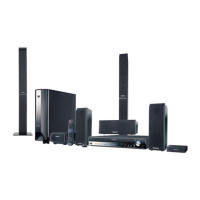
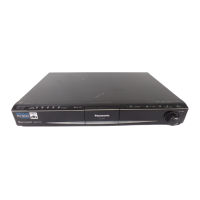

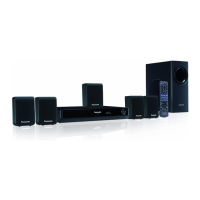
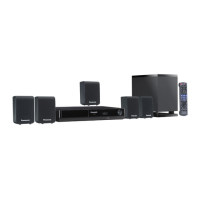
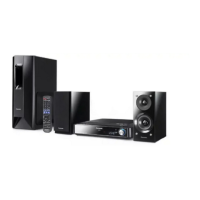
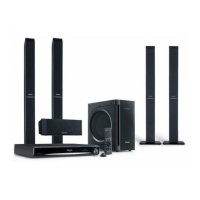
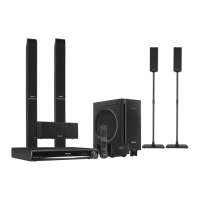
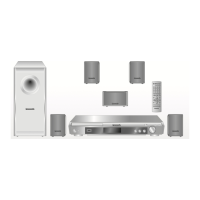
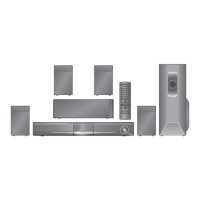
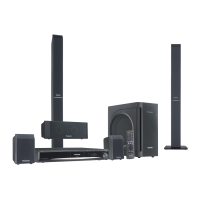
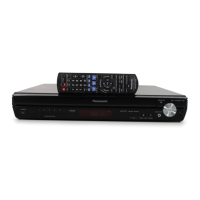
